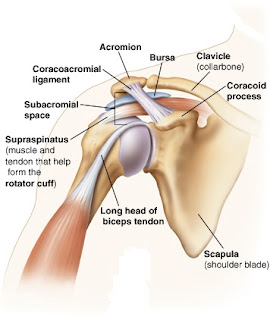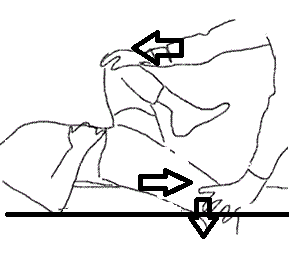The venous issue.
Varicose veins
“Don’t trust the heart, it wants your blood.”
Veins are blood vessels carrying de-oxygenated blood towards heart.
Their might occur vascular abnormalities leading to venous defects, causing
several bodily problems. This article is aimed at providing some basic
information about the disease called “varicose
veins”.
Before moving towards the topic, let’s have an overview on what veins
actually are, and what functions do they perform in our body.
Veins carry oxygen-depleted blood from tissues and organs to the heart. Veins
can be deep (running below the fascia), superficial (running above the fascia)
and perforating (running between deep and superficial). Veins are not as thick
and elastic as the arteries, hence they do not hold their shape under
compression and might get torn when overstretched. The blood pressure in the
veins is lower as compared to the arteries, therefore it’s difficult for the
blood to run against the gravity especially in the limbs.
The activity of the
muscles surrounding the veins helps to push blood in the direction of heart. Lower
limbs being far away from the heart are more affected by the gravitational pull
as compared to the other parts of body. Hence, there’s more work to be done by
the calf muscles i.e. “the contraction”,
which helps pushing back the blood towards the heart. The movement of the limbs
assist the flow of venous blood, which is the primary criterion to avoid
vascular abnormalities i.e. “the motion”,
which helps in emptying of blood vessels. The veins consists of the valves in
the inner walls which allows the unidirectional flow of blood avoiding the
backflow. Abnormality in the valves like improper closure, leads to distended
veins causing pooling of blood in the extremities, which we call as “varicose veins”.
How to define varicose veins?
Varicose veins are the enlarged veins, appearing as bluish-purple rope
like structures on the skin. These veins are over filled with blood. The
condition occurs after the failure of the one-way valve in the veins of the
lower limbs causing backflow and pooling of blood which was normally supposed
to be pushed towards the heart. The superficial veins are more likely to be
affected than deep veins which are supported more by the muscles. The increased
pressure in the veins is caused by the blood pooling and congestion along with the
gravitational pull.
The image below gives a clear picture of the “normal” and “varicosed”
veins. The valves fail to function normally due to weakening and therefore, accumulated
blood in the limbs cause swelling and discomfort.
 |
| image from google. |
Clinical picture:
Once the condition hits you, it might cause certain symptoms to occur.
Like, “feeling of heaviness” in the
legs, muscle cramps, burning pain, visible swelling in calf muscles and around
the ankles, discomfort, appearance of lumpy and bulging bluish-purple veins (as
they carry de-oxygenated blood), restlessness, dry and itchy skin around the
affected veins, impaired coagulation of blood in case of injury. The symptoms
appear less in the morning and increases by the end of the day. This is due to
the horizontal lying position at night which allows less pooling and hence less
discomfort and swelling in the morning. The upright position of the body and
weight bearing causes accumulation of the blood in extremities which increase
gradually as the day reaches to an end causing more clinical features of pain,
swelling and discomfort at night.
Causes of varicose veins:
1. Age:
The veins loses its elasticity with age, hampering
the normal flow of blood. The valves weakens and cause congestion in the veins.
2. Pregnancy:
Due to hormonal changes in the body during
pregnancy, the veins become lax and less elastic leading to delayed pushing of
the blood uphill. Also, there is a decreased flow of blood in the body due to
fetal nutrient supply along with increased body weight exerting direct pressure
on the legs which again cause venous accumulation.
3. Gender:
Studies suggests that women are more likely to be
affected by the condition due to several reasons. The hormonal changes,
pregnancy, birth control pills play a major role in causing varicose veins.
4. Obesity:
More weight adds more pressure to the lower limbs
during weight bearing.
5. Body position:
Prolonged standing or prolonged sitting cause less
work done by skeletal muscles. Therefore less assistance provided to the veins
to allow normal blood flow.
Complications:
1.
Ulcers:
Impaired blood flow leads to increased pressure
exerted by the veins within the affected areas. Fluid accumulation may hence
cause ulceration of the skin.
2.
Thrombosis:
Their might be a risk of
blood clot in the veins hampering normal blood flow.
3.
Rupture:
The excessive amount of the blood and dilation
of veins may cause rupture.
How to prevent varicose veins?
1.
Physical
activity:
Keeping up
with the normal day-to-day physical activity is enough to prevent the
occurrence of varicose veins, however if you are low on mobility and physical
work the you must try to add physical activities to your daily routine.
Constantly changing the positions helps as well. To work more on your condition
it is good to add some form of exercises. Simple movements of legs and feet
will do a great job. For example, ankle-toe pumps serve to be a great cure for
altered blood circulation.
2.
Elevation
of limbs:
Keeping the
legs hanging is a big no if you are a victim of vericose veins. Hanging legs
gives more room to the blood to accumulate in the direction of gravity and
cause excessive swelling due to pooling of blood.
3.
Compression
stockings:
These
stockings are skin tight and keeps the muscles contracted hence not allowing
any blood to pool around the limb.
4.
Weight
control:
Yes! Weight
is definitely one of the major issues causing vascular problems, as the lower
limbs carry all the weight of the upper body of an individual. More burden on
the lower limbs causes increased pressure on the veins leading to abnormalities.
Therefore, if you are already overweight then you must pull up your socks and
plan your weight reduction techniques now.
5.
Postural
changes:
If your
workplace demands a sustained position for prolonged periods of time, you must
add timely postural changes to your routine. If you stick to your chair for
hours, stand up in between and take a walk.
6.
Comfortable
footwear:
The best
recommended shoes for varicose veins are flat shoes. High heels or improper
fitting of the shoes hampers the normal blood circulation. Shock absorbing and
comfortable flat shoes allow the calf muscles to work as they are supposed to.
Take care.



Comments